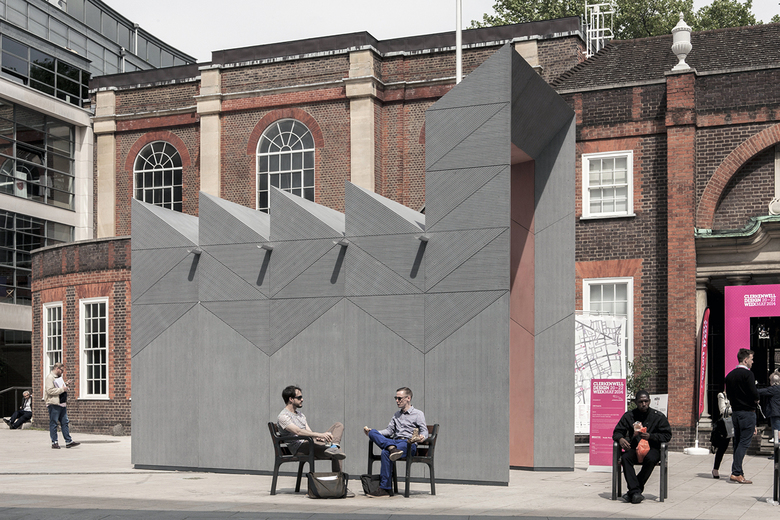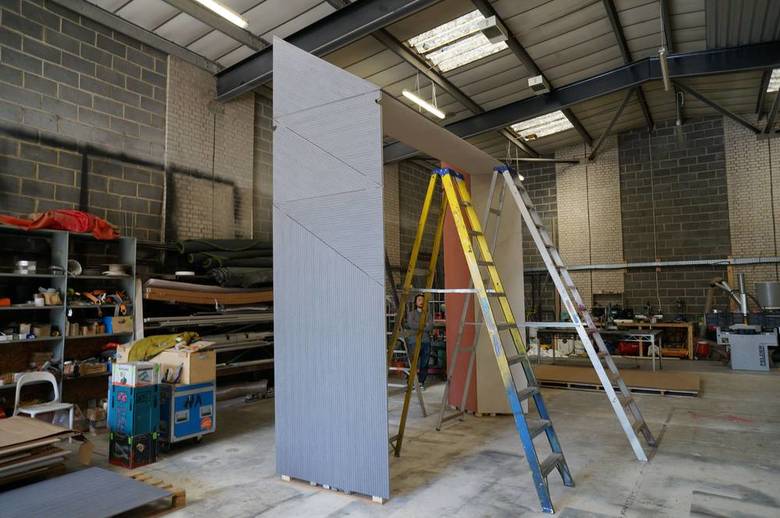Equitone at Clerkenwell Design Week
John Hill
22. September 2014
Photo courtesy of Equitone
For London's Clerkenwell Design Week in May of this year, Studio Weave created the Smith pavilion, which showcased the innovative use of tools in making things – books, clocks, even coffee – but also fiber cement panels from Equitone.
Studio Weave, headed by Je Ahn and Maria Smith, designed the pavilion as a way to tap into the area's manufacturing history (one definition of smith is "a worker," such as in a blacksmith). While the workshops and demonstrations held between the walls of the pavilion were the most important ingredient in expressing this idea, the architecture – specifically the grooved fiber cement panels – also played a role, both outside and inside. Fiber cement panels are after all, in the words of Studio Weave, "a material invented by re-appropriating an old paper mill and spinning-machine," therefore a contemporary incarnation of historical crafts.
Photo courtesy of Equitone
Photo courtesy of Equitone
The exterior was made up of trapezoidal and triangular Equitone panels in the company's Linea profile specially developed for the installation. The vertical, horizontal, and diagonal direction of the grooves cut into the through-colored panels gave the parallel facades their unique texture, while the diagonals in particular paralleled the roof's sawtooth profile that caricatured the larger factories of the area.
Photo courtesy of Equitone
Photo courtesy of Equitone
Inside, below the sawtooth roof's translucent clerestories, traditional crafts were represented on serrated walls in more fiber cement panels, flat instead of ribbed and full of color in contrast to the gray exterior. Like stained glass windows in a church, these visuals told stories, in line with the workshops that brought crafts to the present day – on the last day of Clerkenwell Design Week the pavilion hosted a 3d-printing demonstration.
Photo: Jim Stephenson/Studio Weave
Photo: Studio Weave
A quick glance at Equitone's website reveals primarily rainscreen facade applications, where the fiber cement panels are bonded or mechanically fastened to metal frames. With Smith, Studio Weave worked with structural engineer Webb Yates and fabricator Nicholas Alexander to use the Equitone as a stress skin on a timber frame. The team exploited fiber cement's strong tensile properties by allowing the panels to provide lateral stability for the structural frame. Future applications of Linea might not exploit the material's structural potential, but no doubt in the years to come we will see more architects using the profile for expressive effect.







